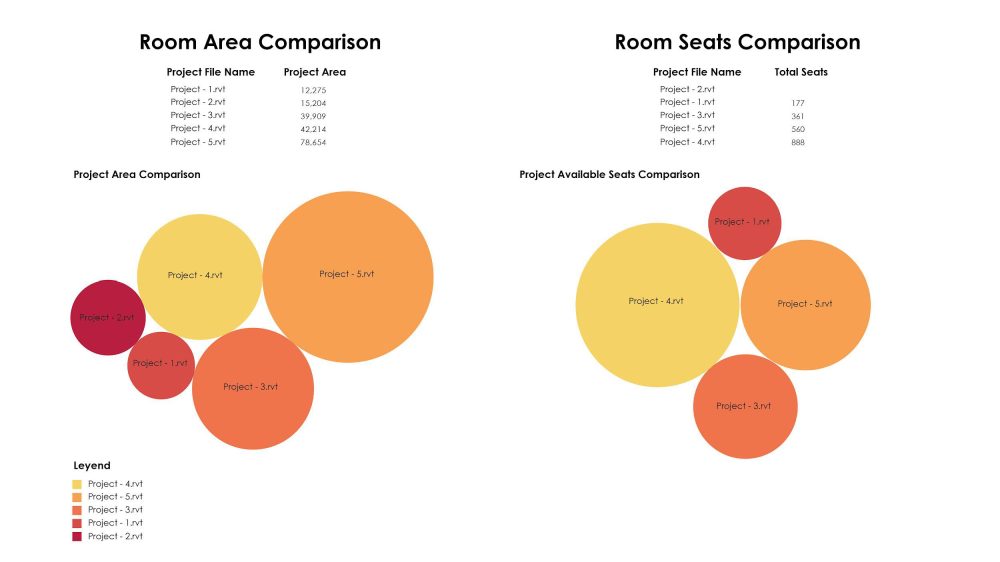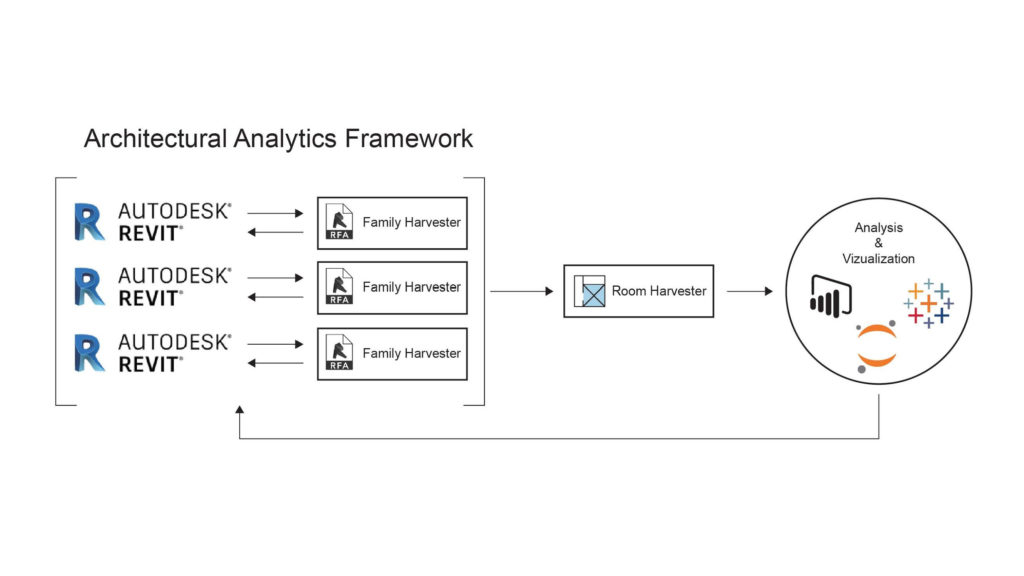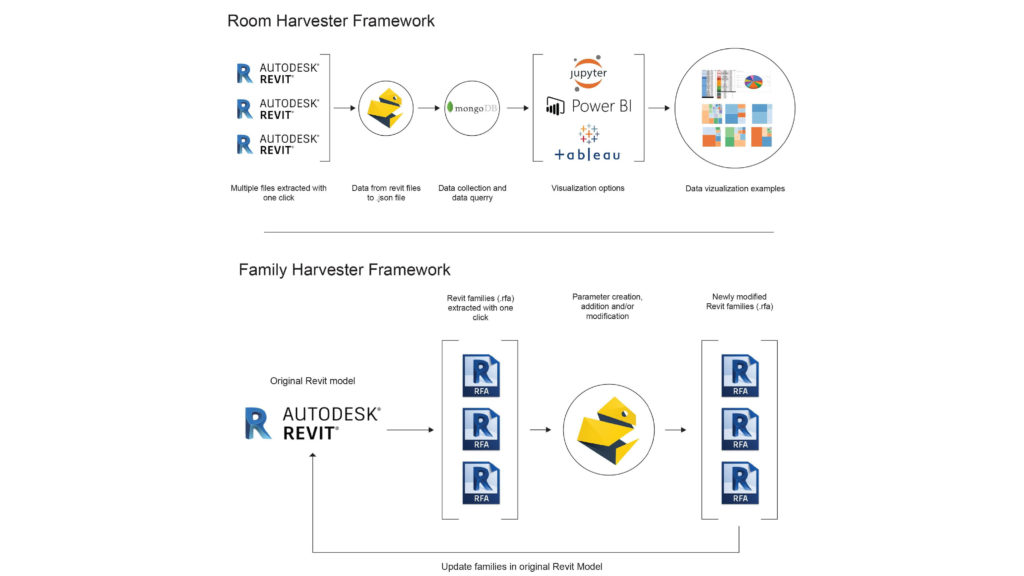BIM BIG DATA
TAGS
#BIM #Bigdata #DataVis #Research
TEAM
Alireza Karduni, Ashkan Radnia, Fernando Claudio Rodríguez, Chris Beorkrem
LOCATION / YEAR
Charlotte, NC 2019
As technology develops at an astounding rate, data has become an intrinsic by-product on major fields, including architecture. Providing designers, contractors and other stakeholders with additional information in order to make informed real time decisions. This paper describes the creation of a series of prototypes which are intended to convert an archive of Building Information Models (BIM) from Little Diversified Architectural Consulting, an early adopter of Autodesk Revit, into a database which can be analyzed using Big Data approaches to data analysis. Using python, as opposed to Revit’s native C# language, provided a more dynamic and simpler pipeline for connecting to the underlying database behind Revit. Use of non-relational databases proved a more efficient system for managing all the information produced by the models. Throughout the use of these tools, we were able to generate our prototypes, which can be divided into three main sections. Starting with altering data inside a Revit model, allowing us to manipulate the databases and add new information as needed. Secondly we collected data between multiple models and stored all the information in a single database. Lastly is visualizing the obtained data from models in order to represent, compare and evaluate the data. After running multiple tests on the models, results proved to reduce repetitive tasks on traditional workflows, while allowing for better analysis and understanding of the implications and processes we use as designers in the 21st century.
INTRODUCTION
Data has quickly become one of the largest and most valuable by-products in history and has revolutionized the way the world collects, develops and uses information. Industries such as automotive and motorsport analyze all the data retrieved from sensors in their vehicles to maximize the efficiency of their products and racers to gain an advantage from the competition. Therefore, “increasingly, the value of a business is tied to its ability to mine data”1 and the AEC industry is quickly becoming one of the largest data producers in the world, as building design and production becomes more automated and more building elements are sensored. This information is becoming essential for clients to better understand how their buildings are performing, ranging from simple things like temperature statistics on thermostats, to counting the number of times doors are being opened and closed, to complex computer vision monitoring of behaviors. Alternatively, regulating the controls of HVAC systems, while monitoring heat gain and loss through this process and understanding the circulation and use in the building across the day, only helps to fix issues once the building is occupied. Data created during the design process can help to back up design estimates even after construction is completed, potentially providing live comparisons from environmental analysis to actual environmental data.
From an economic perspective, data can help manage construction costs and budgets, during and after the design process, providing cost and time estimates, grounded in real time data, which can be compared as the project progresses. During the construction phase, data produced on site can provide up-to-date information that can help contractors, construction companies and stakeholders make informed on-time decisions 2. As technology continues to progress at an astounding rate, it is time for the architecture field to catch up to these advances and take advantage of them. Building Information Modeling (BIM) tools such as Autodesk Revit have revolutionized the industry becoming the standard for architectural production. At the same time Revit is generating an astounding amount of valuable data. This paper will describe the creation of a series of prototypes which are intended to convert an archive of BIM models from a large Architectural Design firm (Little Diversified Architectural Consulting) into a database which can be analyzed using Big Data approaches to data analysis.
Given the current intrinsic value of data, the goals of the project consist of creating a standardization of information and automatizing large repetitive tasks. For example, an analytical benchmarking task that normally could take multiple employees, weeks to complete, can now be performed in a matter of minutes. This helps demonstrate the power and benefits of using this information. Knowing this, the value and use of this data is greatly expanded, especially when analyzed across hundreds, or even thousands of models. When we can quickly access and compare a huge range of models we can begin to demonstrate some of the capabilities of harnessing the power of big data for Architecture.
The " Little" Toolbar



Comparison Across Projects




